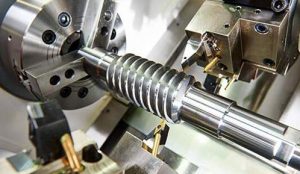Prototype CNC Milling: How to Execute?
Prototype CNC milling is a precise and efficient process for creating complex three-dimensional parts from a solid block of material. This process involves the use of computer-controlled tools to cut and shape the material into the desired form. Executing a prototype CNC milling project requires careful planning, design, and operation to achieve high-quality results.

Planning Your Prototype
Define Your Objectives
Begin by clearly defining the goals of your prototype, including the functionality, performance requirements, and aesthetic aspects. This step is crucial for determining the appropriate materials, design specifications, and milling strategies.
Selecting Materials
Choose a material that best suits your prototype’s requirements. Consider factors such as strength, weight, durability, and cost. Common materials for prototype CNC milling include aluminum, steel, brass, and plastics. The cost of materials can vary significantly, from $20 per block for basic plastics to over $100 for high-grade metals.
Designing for Milling
Design your part with CNC milling in mind. Optimize the geometry to minimize complex undercuts and reduce the need for special tooling. Keep tolerances realistic; standard tolerances for CNC milling are +/- 0.005 inches, but tighter tolerances can significantly increase the cost.
Preparing for Milling
Creating a CAD Model
Design a detailed 3D CAD model of your prototype. This model is essential for the CNC milling machine to accurately cut the part. Ensure the model precisely reflects the desired dimensions and features.
Choosing the Right Tools
Select the appropriate cutting tools for your material and design. Factors to consider include the tool material (e.g., carbide, high-speed steel), the type of cutter (e.g., end mill, ball nose), and the size of the tool. The power of the CNC machine also influences the choice of tools, with more powerful machines capable of handling harder materials and larger cuts.
Setting Up the CNC Machine
Securely mount the material block onto the machine bed and ensure it is perfectly aligned. Program the CNC machine with the tool paths based on your CAD model, specifying the cutting speed, feed rate, and depth of cut. These parameters are crucial for balancing efficiency and quality; for example, a higher feed rate can reduce milling time but may compromise surface finish.
Milling Process
Machining the Part
Start the milling process and monitor the machine closely, especially during the first run. Adjustments may be necessary to optimize the cutting conditions and achieve the desired quality.
Quality and Specifications
The quality of a CNC milled prototype depends on several factors, including the precision of the CAD model, the accuracy of the CNC machine, and the condition of the cutting tools. High-quality CNC milling can achieve dimensional accuracies within +/- 0.005 inches and surface finishes as smooth as 32 µin Ra.
Post-Processing
After milling, the prototype may require deburring, polishing, or other finishing processes to achieve the desired surface quality and appearance. The cost and time for post-processing depend on the complexity and requirements of the part.
Evaluation and Iteration
Testing and Analysis
Evaluate the prototype against your initial objectives and specifications. Testing may involve functional tests, assembly with other parts, or aesthetic evaluation.
Iterating Design
Based on feedback, you may need to iterate on the design and milling process to refine the prototype. This iterative process is a key advantage of CNC milling, allowing for rapid modifications and improvements.
Executing a successful prototype CNC milling project requires attention to detail at every stage, from planning through to post-processing. By carefully selecting materials, optimizing designs for milling, and precisely controlling the milling process, designers and engineers can create high-quality prototypes that meet or exceed their requirements.